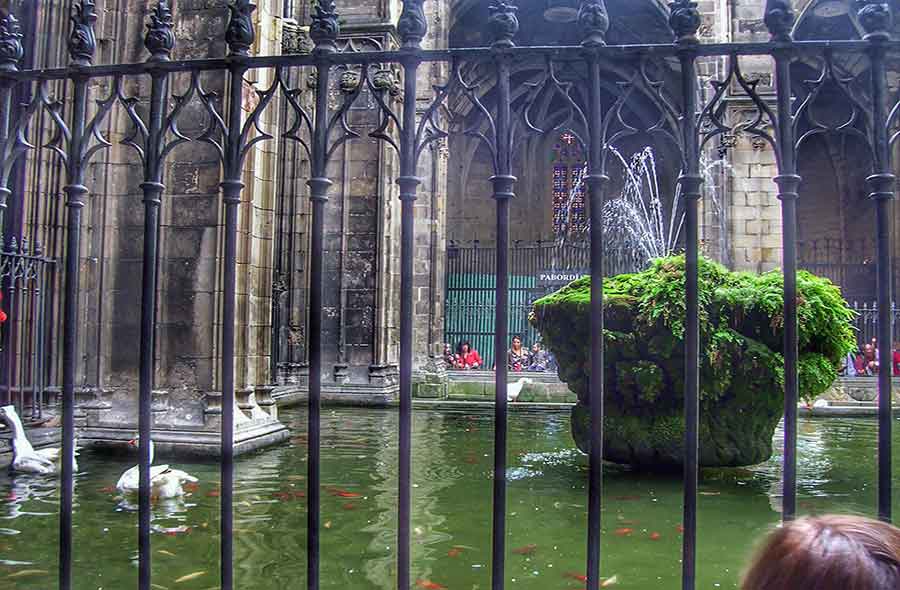

The cloister of the cathedral is of Gothic style and was built between the fourteenth and fifteenth centuries. The door that communicates with the basilica is of Romanesque style, is totally marble and the oldest, is estimated to date from the first quarter of the thirteenth century.

The cloister has two exterior accesses: the Gate of the Pietat (14th century) and the Gate of Santa EulÓlia. It is quadrangular and contains
four galleries that open to the central garden. One of these galleries has access to the chapel of Santa Ll˙cia, Romanesque church of the thirteenth
century that was conserved to fit the layout of the cloister.
On the day of Corpus Christi your garden is dressed to celebrate the “Ou com Balla” (the egg as it dances in English). This custom
consists of making an egg dance in the fountain spout which is decorated with flowers and fruits. This celebration dates from 1636. This show you can
see it also on the Ardiaca House and on the
Frederic Mares Museum.
A curiosity of the cloister: is its large pond with thirteen white hollows. There are two legends that are attributed: the first tells us that when the
construction of the cathedral began, the guardian of the works lived with escorts. One day thieves burst in and the geese began to squawk, thus avoiding the robbery. The
second is due to the legend of Santa EulÓlia. During the Roman era EulÓlia was condemned for refusing to renounce the Christian faith and 13 martyrdoms were applied.
Everyday
Pla de la Seu, Barcelona (view map)
Line 4 (Jaume I)
Not for free but still great: CHOR & ROOF
On this Guest House, the time stood still and you can relax to plan your day without pressure.
Historical building with cozy rooms for all budgets. Due is not necessary to spend a lot of money to enjoy a good located accommodation.
Good located and cozy Guest House near all the important
point that you would love to visit in Barcelona.
Totally renovated Guest House with all comfort that you would like to have during your stay in Barcelona.
FOLLOW US!